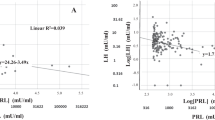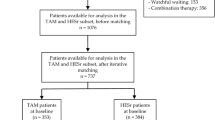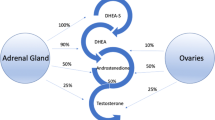Abstract
The aim of the study was to compare the onset, incidence and frequency/intensity of hot flushes during androgen-deprivation therapy with a gonadotropin-releasing hormone antagonist (GnRH) blocker versus an agonist using data from a randomized Phase 3 clinical trial. In total, 610 prostate cancer patients received monthly degarelix (s.c., 240/80 mg, n=207, or 240/160 mg, n=202) or leuprolide (i.m., 7.5 mg, n=201) for 12 months. Data on hot flushes was collected as self-reported adverse events and in a subgroup of 254 patients with electronic diaries. The onset of hot flushes was faster on degarelix versus leuprolide, and was accompanied by higher median hot flush scores during the first 3 months. However, there were no significant differences in overall incidence rates and median hot flush scores over the entire 12 months. After the third month, incidence rates dropped below 6%, whereas prevalence rates remained constant in all the three treatment arms. In multivariate analysis, body weight and heart rate at baseline were independent predictors of hot flushes (P<0.05). Except for a more rapid onset with the GnRH antagonist, there were no major differences in the overall pattern of hot flushes between treatment options. Weight control may help to minimize the incidence of hot flushes.
This is a preview of subscription content, access via your institution
Access options
Subscribe to this journal
Receive 4 print issues and online access
$259.00 per year
only $64.75 per issue
Buy this article
- Purchase on Springer Link
- Instant access to full article PDF
Prices may be subject to local taxes which are calculated during checkout




Similar content being viewed by others
References
Singer EA, Golijanin DJ, Miyamoto H, Messing EM . Androgen deprivation therapy for prostate cancer. Expert Opin Pharmacother 2008; 9: 211–228.
Tammela T . Endocrine treatment of prostate cancer. J Steroid Biochem Mol Biol 2004; 92: 287–295.
Van Poppel H, Nilsson S . Testosterone surge: rationale for gonadotropin-releasing hormone blockers? Urology 2008; 71: 1001–1006.
Zinner NR, Bidair M, Centeno A, Tomera K . Similar frequency of testosterone surge after repeat injections of goserelin (Zoladex) 3.6 and 10.8 mg: results of a randomized open-label trial. Urology 2004; 64: 1177–1181.
Gittelman M, Pommerville PJ, Persson BE, Jensen JK, Kold Olesen T . A 1-year, open label, randomized phase II dose finding study of degarelix for the treatment of prostate cancer in North America. J Urol 2008; 180: 1986–1992.
Van Poppel H, Tombal B, de la Rosette JJ, Persson B-E, Jensen J-K, Kold Olesen T . Degarelix: a novel gonadotropin-releasing hormone (GnRH) receptor blocker—results from a 1-yr, multicentre, randomised, phase 2 dosage-finding study in the treatment of prostate cancer. Eur Urol 2008; 54: 805–815.
Spetz AC, Zetterlund E-L, Varenhorst E, Hammar M . Incidence and management of hot flashes in prostate cancer. J Support Oncol 2003; 1: 263–273.
Alekshun TJ, Patterson SG . Management of hot flashes in men with prostate cancer being treated with androgen deprivation therapy. Supportive Cancer Ther 2006; 4: 30–37.
Kouriefs C, Georgiou M, Ravi R . Hot flushes and prostate cancer: pathogenesis and treatment. BJU Int 2002; 89: 379–383.
Sharifi N, Gulley JL, Dahut WL . Androgen deprivation therapy for prostate cancer. JAMA 2005; 294: 238–244.
Chen AC, Petrylak DP . Complications of androgen-deprivation therapy. Curr Urol Rep 2005; 6: 210–216.
Holzbeierlein JM, McLaughlin MD, Thrasher JB . Complications of androgen deprivation therapy for prostate cancer. Curr Opin Urol 2004; 14: 177–183.
Karling P, Hammar M, Varenhorst E . Prevalence and duration of vasomotor symptoms after surgical or medical castration in men with prostatic carcinoma. J Urol 1994; 152: 1170–1173.
Trachtenberg J, Gittleman M, Steidle C, Barzell W, Friedel W, Pessis D, Abarelix Study Group et al. A phase 3, multicenter, open label, randomized study of abarelix versus leuprolide plus daily antiandrogen in men with prostate cancer. J Urol 2002; 167: 1670–1674.
McLeod D, Zinner N, Tomera K, Gleason D, Fotheringham N, Campion M, Abarelix Study Group et al. A phase 3, multicenter, open-label, randomized study of abarelix versus leuprolide acetate in men with prostate cancer. Urology 2001; 58: 756–761.
Debruyne F, Bhat G, Garnick MB . Abarelix for injectable suspension: first-in-class gonadotropin-releasing hormone antagonist for prostate cancer. Future Oncol 2006; 2: 677–696.
Klotz L, Boccon-Gibod L, Shore ND, Andreou C, Persson BE, Cantor P et al. The efficacy and safety of degarelix: a 12-month, comparative, randomized, open-label, parallel-group phase III study in patients with prostate cancer. BJU Int 2008; 102: 1531–1538.
Pommerville PJ, de Boer JG . GnRH antagonists in the treatment of advanced prostate cancer. Can J Urol 2010; 17: 5063–5070.
Sloan JA, Loprinzi CL, Novotny PJ, Barton DL, Lavasseur BI, Windschitl H . Methodologic lessons learned from hot flash/flush studies. J Clin Oncol 2001; 19: 4280–4290.
Quella S, Loprinzi CL, Dosee AM . A qualitative approach to defining hot flash/flushes in men. Urol Nurs 1994; 14: 155–158.
Appling S, Paez K, Allen J . Ethnicity and vasomotor symptoms in postmenopausal women. J Womens Health (Larchmt) 2007; 16: 1130–1138.
Green R, Santoro N . Menopausal symptoms and ethnicity: the Study of Women's Health Across the Nation. Womens Health (Lond Engl) 2009; 5: 127–133.
Thurston RC, Sowers MR, Chang Y, Sternfeld B, Gold EB, Johnston JM et al. Adiposity and reporting of vasomotor symptoms among midlife women: the study of women′s health across the nation. Am J Epidemiol 2008; 167: 78–85.
Wu FC, Tajar A, Pye SR, Silman AJ, Finn JD, O’Neill TW et al. European Male Aging Study Group. Hypothalamic-pituitary-testicular axis disruptions in older men are differentially linked to age and modifiable risk factors: the European Male Aging Study. J Clin Endocrinol Metab 2008; 93: 2737–2745.
Badawy A, State O, Sherief S . Can thyroid dysfunction explicate severe menopausal symptoms? J Obstet Gynaecol 2007; 27: 503–505.
Pearce EN . Thyroid dysfunction in perimenopausal and postmenopausal women. Menopause Int 2007; 13: 8–13.
Øverlie I, Moen MH, Holte A, Finset A . Androgens and estrogens in relation to hot flushes during the menopausal transition. Maturitas 2002; 41: 69–77.
Acknowledgements
We gratefully thank Jens-Kristian Jensen for devoted assistance with the statistical analysis.
Author information
Authors and Affiliations
Corresponding author
Ethics declarations
Competing interests
Dr Karup, Dr van der Meulen and Dr Tankó are full-time employees of Ferring Pharmaceuticals. The remaining authors declare no conflict of interest.
Rights and permissions
About this article
Cite this article
Iversen, P., Karup, C., van der Meulen, E. et al. Hot flushes in prostatic cancer patients during androgen-deprivation therapy with monthly dose of degarelix or leuprolide. Prostate Cancer Prostatic Dis 14, 184–190 (2011). https://doi.org/10.1038/pcan.2011.11
Received:
Revised:
Accepted:
Published:
Issue Date:
DOI: https://doi.org/10.1038/pcan.2011.11



